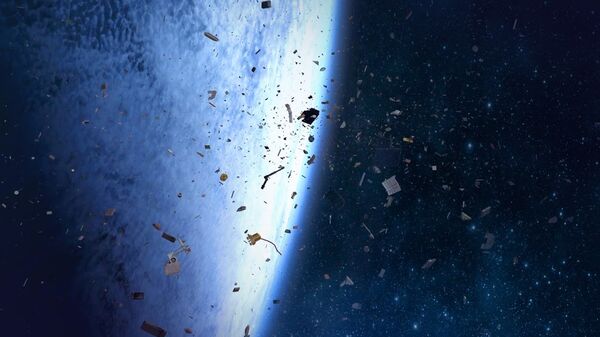Sputnik: How accurate can you say the predictions were for the trajectory of Tiangong's descent?
Dr. Alice Gorman: It seems there was a reasonable amount of divergence between the predictions being made by various sources for it's trajectory and, of course, one of the problems here was that the Chinese had lost contact with the spacecraft. So they were not getting direct data about where it was. How it works with stuff in orbit is that you have to predict where it will be in the future, go and look for it in that position, verify it's there and then predicted it the next way along. So in Tiangong-1 there were lots of points where the location it was supposed to be probably wasn't where it was and that kind of error margin grows over time, so this explains some of the divergence in the predictions that we were getting, but they were not too bad taking all things into consideration.
So there's a number of telescopes around the world whose job it is basically to look at where things are and maintain their positions in the catalog of space objects, so those observations were being made from the moment it was launched, but as it started to come back into the atmosphere, the closer to the atmosphere you are, you get all kinds of uncertainties, very complex factors come into play, so suddenly the predictions that are being made start to become a little less accurate and of course there were many instruments that were being trained on Tiangong-1 as well and the Chinese had their own tracking instruments and they ended up having the most accurate data.
READ MORE: 'Scientists Around the World Trying to Solve Space Debris Problem' — Astronomer
Sputnik: Can you tell us a little bit about the kinds of factors that are utilized in determining the position of an object like this, how really can you track something like this when it's lost contact?
Dr. Alice Gorman: It's easier when things are out of reach of the atmosphere because then you just have a set of equations, there are six elements that are used to describe the location of something in orbit, what makes it complicated is when the orbit passes through areas of space where the Earth's atmosphere reaches and that can vary a lot, it varies as the atmosphere expands and contracts under the influence of heating, there are different layers in the atmosphere some of which have temperature and chemical and charged properties, and some of them are not very well-known, there's region called the thermosphere and when Tiangong-1 entered the thermosphere it was a little bit harder to have a model that would put all these factors together and enable an accurate prediction.
So it's funny isn't it, you would think that by this time, we've been working in space for six years that all of these models would be very precise and accurate, but the Earth's atmosphere is just a very complex place and scientists do the best they can to keep track of all these things and this is one of the issues that we have with the space junk problem. We don't know precisely where a lot of objects are, so when you try to model these millions of bits of stuff circling around the Earth in order to make space safer for functioning satellites it's just so complex, it's a really difficult task.
Sputnik: What, if anything, do you think that the international scientific community learnt from the Tiangong-1 descent after it lost contact?
Dr. Alice Gorman: In many ways its descent into the atmosphere was pretty much the same as any other bit of space junk coming down, so in terms of what we learned about the atmosphere or the way spacecraft re-enter it was pretty similar to pretty much every other time I think, so not much new to be learned. I think something we did learn is that even though there are a lot of media stories talking about the risks of being hit by a piece of falling space junk and the risks of being hit by this particular space station, we know that those risks a pretty minimal, and I don't think people were really worried which they might've been in the past. When Skylab-1 came down in 1979 there was a lot of fear in the public because this kind of thing hadn't happened before, but here we are in 2018 lots of stuff has re-entered, it's not as big of a deal as it used to be.
READ MORE: Denmark Hopeful to 'Enter Superliga' With Recent Space Project
Sputnik: Has there been an object as large as Tiangong-1 though?
Dr. Alice Gorman: Yes, it's not a tiny satellite, but it's also not the biggest spacecraft that are out there, so there's quite a few others that are more or less around that size, one of these is EnviSAT which is the size of a double-decker bus and there have been much larger objects. Skylab was very big compared to Tiangong-1 and if you look at something like the International Space Station, it is huge it weighs many, many tons more, it's much, much bigger, so Tiangong-1 was a reasonable size. The thing about size is that the outside of the spacecraft obviously burns up first when it's re-entering the atmosphere and things like the fuel tanks are often more protected inside the spacecraft, and they're also made out of materials that have a higher melting temperature so they sometimes do survive to fall back down to Earth, so the size of the whole spacecraft does affect how much material might actually make it to the surface of the Earth.
The views of the speaker do not necessarily reflect those of Sputnik.



